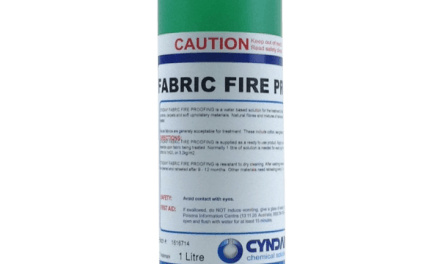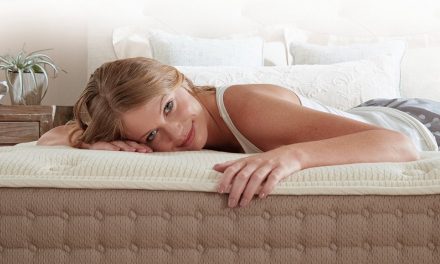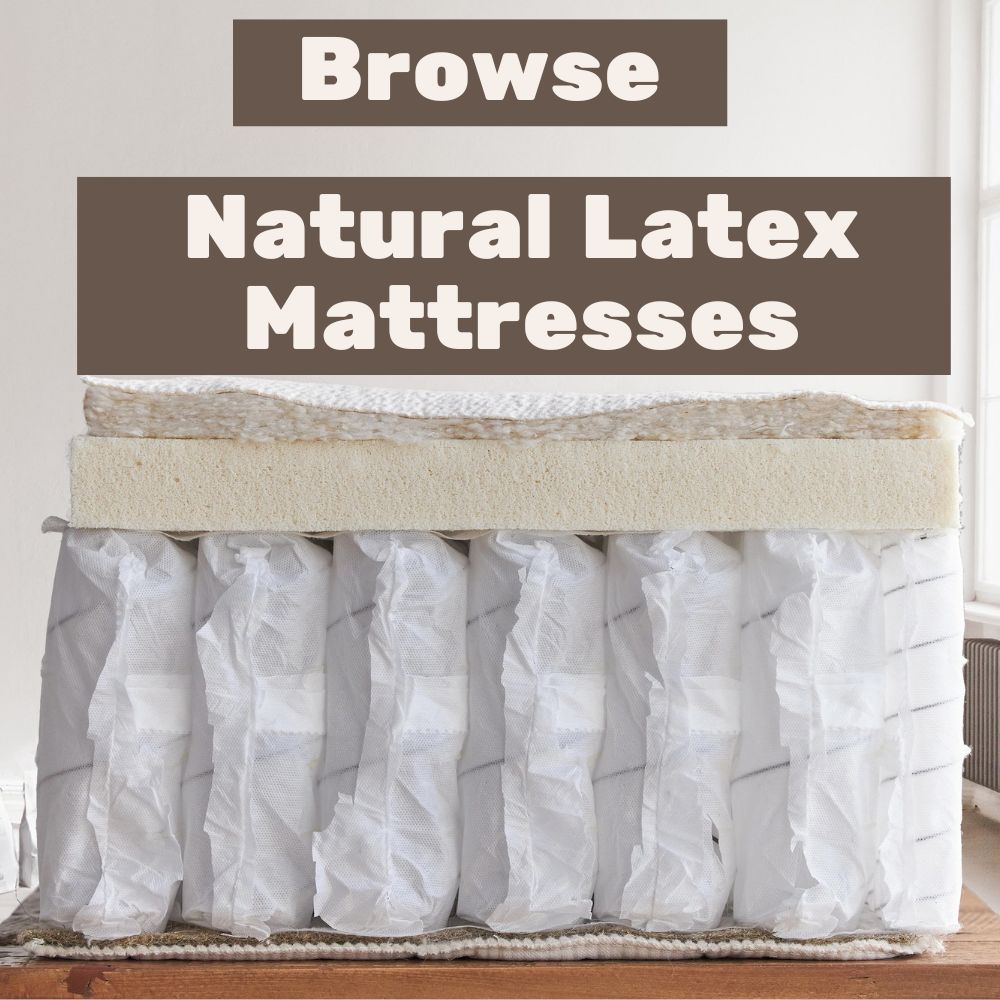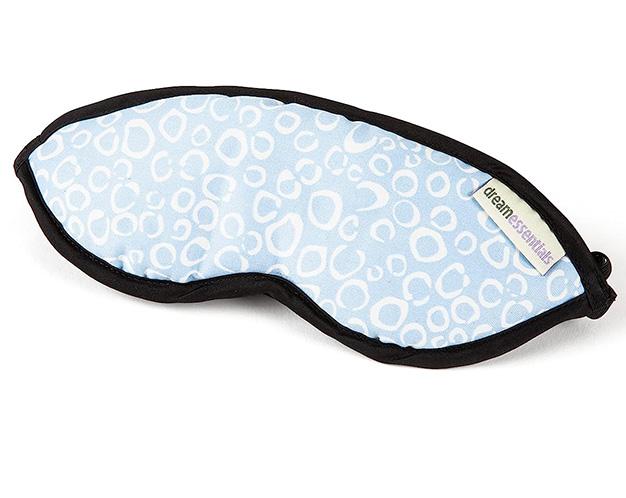Table of Contents
Sleep Easy: How to Beat Mattress Allergies and Wake Up Refreshed!
Are you tired of waking up with a stuffy nose and itchy eyes? Don’t let mattress allergies ruin your sleep and keep you from feeling fully refreshed! This article will show how to beat mattress allergies and create a healthier sleep environment.
Mattress allergies occur when dust mites, pet dander, or mold spores accumulate in your mattress, triggering unpleasant allergic reactions. But fear not! We’ve provided practical tips and expert advice to help you conquer those pesky allergens.
By choosing an organic latex mattress with hypoallergenic materials, practicing good hygiene habits, and implementing regular cleaning routines, you can alleviate symptoms and enjoy a restful night’s sleep.
Discover the best ways to prevent and reduce mattress allergies, from using allergen-proof mattress covers to washing bedding at the right temperature. We’ll also discuss the importance of maintaining a clean bedroom and how to choose the best vacuum cleaner for allergy sufferers.
Say goodbye to restless nights and hello to a rejuvenated morning routine. It’s time to sleep easy and wake up refreshed! Let’s explore how you can beat mattress allergies once and for all.
Section 1: Understanding mattress allergies: causes and symptoms
Allergies are a common problem that affects millions of people worldwide. Mattress allergies, in particular, can be a significant source of discomfort and sleep disturbances. Understanding the causes and symptoms of mattress allergies is the first step toward finding practical solutions.
Causes of mattress allergies
Mattress allergies are primarily caused by allergens such as dust mites, pet dander, and mold spores. These microscopic particles can accumulate in your mattress over time, leading to allergic reactions. Dust mites thrive in warm and humid environments, making mattresses an ideal breeding ground. Pet dander, which consists of tiny flecks of skin shed by animals, can also get trapped in your mattress and trigger allergies. Mold spores can also find their way into your mattress, especially if it is exposed to moisture.
Symptoms of mattress allergies
The symptoms of mattress allergies can vary from person to person, but common signs include sneezing, itchy and watery eyes, nasal congestion, coughing, and skin rashes. These symptoms can be exceptionally bothersome during the night and upon waking up, as the allergens present in the mattress are near your face and airways. If you find yourself experiencing these symptoms consistently, especially after spending time in bed, you likely have mattress allergies.
Dealing with mattress allergies
Now that we understand the causes and symptoms of mattress allergies let’s find effective ways to deal with them. The key lies in creating a clean and allergen-free sleeping environment, which we will discuss in the following sections. By taking proactive measures, you can significantly reduce allergens in your mattress and enjoy a better night’s sleep.
Section 2: Common allergens found in mattresses
To effectively combat mattress allergies, it’s crucial to familiarize yourself with the common allergens that can be present in your mattress. By understanding what you’re up against, you can take targeted steps to eliminate or reduce these allergens and minimize allergic reactions.
Dust mites
Dust mites are tiny, microscopic creatures that thrive in warm and humid environments. They feed on dead skin cells, and their droppings contain allergenic proteins that can trigger allergic reactions. Dust mites can easily find their way into your mattress, where they multiply and thrive. This can be a significant problem for individuals with dust mite allergies, as the presence of these creatures can cause significant discomfort and sleep disturbances.
Pet dander
If you have pets, chances are their dander is making its way into your mattress. Pet dander consists of tiny flecks of skin shed by animals, which can trigger allergies in susceptible individuals. Even if you don’t allow your pets on your bed, their dander can still find its way into your mattress through air circulation and other means. If you suffer from pet allergies, taking steps to minimize pet dander in your sleeping environment is essential.
Mold spores
Mold thrives in damp and poorly ventilated spaces, making mattresses susceptible to mold growth, especially if they have been exposed to moisture. Mold spores can be highly allergenic and cause respiratory symptoms, skin irritations, and other allergic reactions. It’s crucial to address any moisture issues in your bedroom and regularly inspect your mattress for signs of mold growth.
By understanding the common allergens in mattresses, you can take targeted steps to eliminate or minimize their presence. In the next section, we will explore how to create a clean and allergen-free sleeping environment.
Section 3: Importance of a clean and allergen-free sleeping environment
Creating a clean and allergen-free sleeping environment is crucial for individuals with mattress allergies. By taking proactive measures to eliminate or reduce allergens, you can significantly improve the quality of your sleep and reduce allergic reactions. Here’s why it’s crucial to prioritize cleanliness in your bedroom:
Better sleep quality
A clean and allergen-free sleeping environment promotes better sleep quality. When you’re not constantly exposed to allergens, your body can relax and recharge more effectively. This can lead to improved sleep patterns, reduced sleep disturbances, and a more restful night’s sleep.
Reduced allergic reactions
You can minimize allergic reactions and their associated symptoms by eliminating or reducing allergens in your bedroom. This means less sneezing, itching, nasal congestion, and other discomforts that can disrupt your sleep. A clean sleeping environment allows you to wake up feeling refreshed and ready to take on the day.
Overall health benefits
Maintaining a clean and allergen-free sleeping environment has broader health benefits beyond managing mattress allergies. It can help prevent respiratory issues, reduce infection risk, and improve indoor air quality. A healthy sleeping environment contributes to your well-being and supports a healthier lifestyle.
Prevent mattress allergies by switching to an organic latex mattress
Are you tired of waking up with a runny nose and itchy eyes? It might be time to consider switching to an organic latex mattress. Unlike traditional mattresses, organic latex mattresses are made from natural materials resistant to dust mites, mold, and other allergens.
Organic latex is derived from the sap of rubber trees, making it an eco-friendly and sustainable choice. It is naturally hypoallergenic and resistant to dust mites, one of the main culprits behind mattress allergies. Choosing an organic latex mattress can create a healthier sleep environment and reduce the risk of allergic reactions.
Not only are organic latex mattresses hypoallergenic, but they also provide excellent support and comfort. The natural elasticity of latex helps to relieve pressure points and promote proper spinal alignment, ensuring a more restful and rejuvenating sleep.
Switching to an organic latex mattress is a long-term investment in your health and well-being. Say goodbye to restless nights and hello to a more comfortable and allergy-free sleep experience.
Why an organic latex mattress is the right mattress for allergy sufferers
Finding the right mattress is crucial to ensure a good night’s sleep if you suffer from allergies. An organic latex mattress is an excellent choice for allergy sufferers due to its natural resistance to allergens.
Unlike traditional mattresses that can harbor dust mites, mold, and other allergens, organic latex mattresses are made from natural materials inhospitable to these microscopic creatures. The dense structure of organic latex prevents allergens from accumulating, reducing the risk of allergic reactions.
Furthermore, organic latex is naturally hypoallergenic and free from harmful chemicals. It is made without synthetic materials, such as polyurethane foam, which can emit volatile organic compounds (VOCs) that may trigger allergies in some individuals. An organic latex mattress lets you sleep easily, knowing you are resting on a clean and safe surface.
In addition to being hypoallergenic, organic latex mattresses offer other benefits for allergy sufferers. The natural breathability of latex helps to regulate temperature and moisture, creating an inhospitable environment for mold and mildew. This can contribute to a cooler and more comfortable sleep environment, reducing the likelihood of allergic reactions.
Cleaning and maintaining your organic latex mattress to reduce allergens
While an organic latex mattress is naturally resistant to allergens, it’s still essential to maintain proper cleanliness and hygiene to minimize the risk of allergic reactions. Regular cleaning and maintenance can help remove accumulated dust, pet dander, or other potential allergens.
To keep your organic latex mattress in top condition, follow these cleaning tips:
1. Regularly vacuum your mattress: Use a vacuum cleaner with a HEPA filter to remove dust and allergens from the surface of your mattress. Pay special attention to seams and crevices where allergens can accumulate.
2. Spot clean spills and stains: If you spill something on your mattress, clean it immediately to prevent stains and mold or mildew growth. Use a mild detergent mixed with water and gently blot the affected area with a clean cloth. Avoid saturating the mattress with water.
3. Air out your mattress: Every few months, remove all bedding and allow your mattress to air out for a few hours. This helps to eliminate any trapped moisture and freshen up the mattress.
4. Rotate your mattress: To ensure even wear and prevent the accumulation of allergens in specific areas, rotate your mattress every few months. This helps to distribute the weight evenly and extends the lifespan of your mattress.
Hypoallergenic and organic bedding and mattress covers
In addition to choosing an organic latex mattress, using hypoallergenic and organic bedding can reduce the risk of mattress allergies. Bedding materials such as cotton, bamboo, and silk are naturally hypoallergenic and less likely to harbor allergens.
When selecting bedding, look for the following features:
1. Allergen-proof mattress covers: Invest in an allergen-proof mattress cover that encases your entire mattress. These covers are made from a tightly woven fabric that prevents dust mites, pet dander, and other allergens from penetrating your mattress. Be sure to choose a cover specifically designed for your mattress size.
2. Hypoallergenic pillows: Pillows can also harbor allergens, so opt for hypoallergenic pillows made from natural materials. Memory foam and latex pillows are excellent choices as they resist dust mites and mold.
3. Organic bedding: Choose bedding made from organic materials, such as organic cotton or bamboo, less likely to contain harsh chemicals and allergens. These materials are breathable and gentle on the skin, promoting a healthier sleep environment.
By combining an organic latex mattress with hypoallergenic bedding and mattress covers, you can create a sleep sanctuary free from allergens and conducive to a restful night’s sleep.
Natural remedies for managing mattress allergies
In addition to preventive measures, several natural remedies can help manage mattress allergies and alleviate symptoms. These remedies can be used with medical treatments or as standalone options for milder allergies.
1. Steam cleaning: Steam cleaning your mattress can effectively kill dust mites and remove allergens. Use a handheld steam cleaner or hire a professional steam cleaning service to ensure thorough cleaning.
2. Essential oils: Certain essential oils, such as tea tree oil and eucalyptus oil, have antimicrobial properties that can help reduce allergens. Add a few drops of essential oil to a spray bottle filled with water and lightly mist your mattress. Allow it to air dry before covering it with bedding.
3. Air purifiers: An air purifier with a HEPA filter can help remove allergens from the air in your bedroom. Place the purifier near your bed for maximum effectiveness.
4. Regular washing of bedding: Wash your bedding, including sheets, pillowcases, and duvet covers, in hot water (at least 130°F) to kill dust mites and remove allergens. Be sure to follow the care instructions on your bedding to avoid damage.
Remember, natural remedies may not provide instant relief or be as effective as medical treatments for severe allergies. It’s always best to consult a healthcare professional if you have persistent or severe symptoms.
Seeking professional help for severe mattress allergies
If you suffer from severe mattress allergies that are affecting your quality of life, it may be necessary to seek professional help. An allergist or immunologist can perform specialized tests to identify the specific allergens causing your symptoms and recommend appropriate treatment options.
Depending on the severity of your allergies, your healthcare provider may recommend one or more of the following treatments:
1. Allergy shots (immunotherapy): Allergy shots involve regular injections of small amounts of allergens to help your body build up tolerance over time. This can be an effective long-term treatment for severe allergies.
2. Prescription medications: Your healthcare provider may prescribe medications, such as antihistamines or corticosteroids, to help manage your allergy symptoms. These medications can provide temporary relief and help control inflammation caused by allergens.
3. Sublingual immunotherapy (SLIT): SLIT involves placing small doses of allergens under your tongue to help desensitize your immune system. This is a convenient alternative to allergy shots and can be done at home under the guidance of a healthcare professional.
Remember, seeking professional help is essential for severe allergies to ensure proper diagnosis and treatment. Your healthcare provider can tailor a treatment plan to address your specific needs and help you find relief from mattress allergies.
Conclusion: Enjoying a restful and allergy-free sleep on an organic latex mattress
Say goodbye to restless nights and hello to a rejuvenated morning routine. Following this article’s tips and advice, you can beat mattress allergies and create a cleaner, healthier sleep environment.
Switching to an organic latex mattress is a significant first step towards reducing allergens in your bedroom. Organic latex mattresses are naturally hypoallergenic and resistant to dust mites, mold, and other allergens. They also provide excellent support and comfort for a more restful sleep experience.
In addition to choosing the right mattress, practicing good hygiene habits and implementing regular cleaning routines can further reduce the risk of allergic reactions. Using hypoallergenic and organic bedding and incorporating natural remedies can also help manage mattress allergies.
It’s essential to seek professional help from an allergist or immunologist for severe allergies. They can perform tests to identify specific allergens and recommend appropriate treatments, such as allergy shots or prescription medications.
Don’t let mattress allergies disrupt your sleep any longer. With the right strategies and a healthy sleep environment, you can sleep easily and wake up refreshed!

















